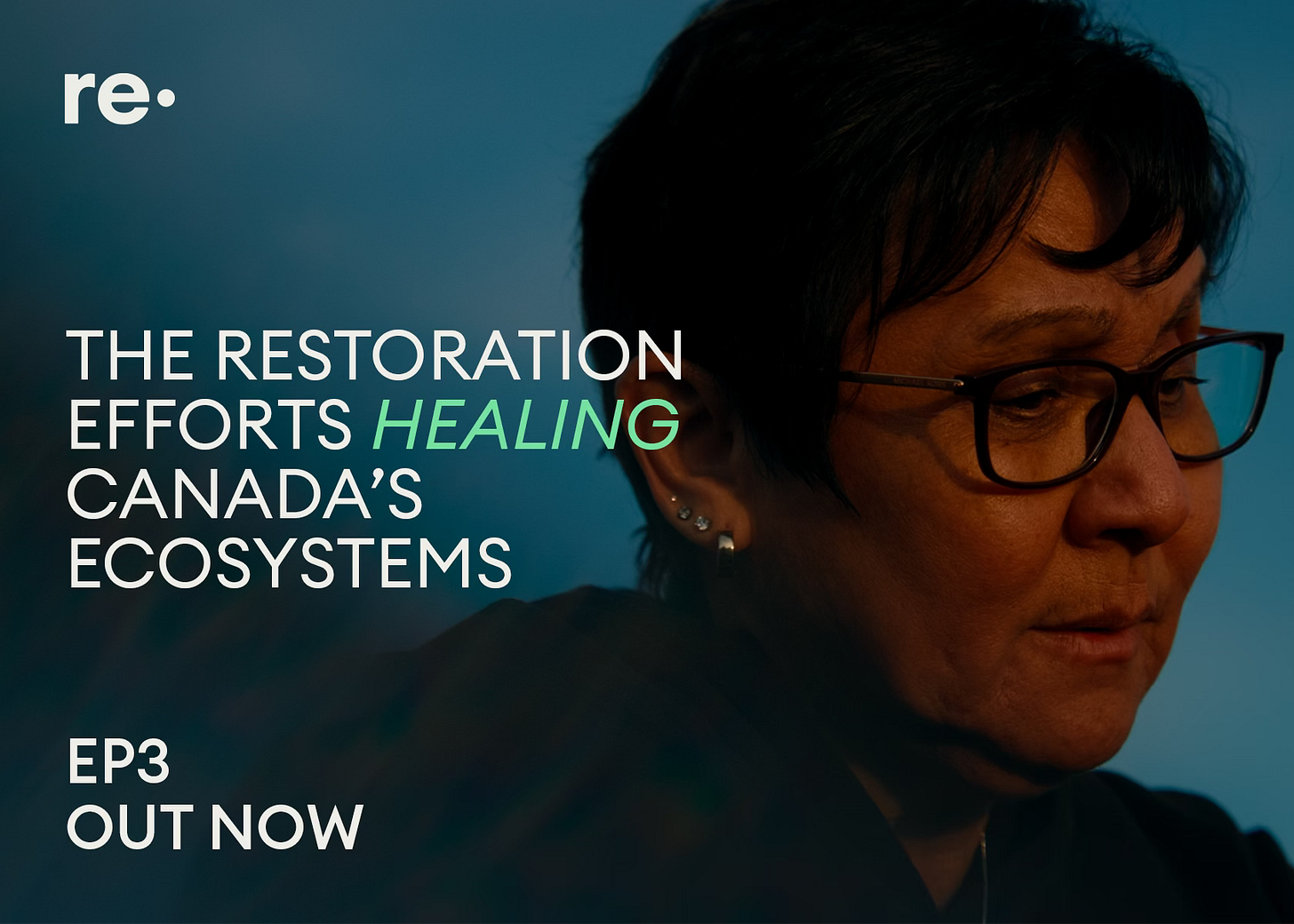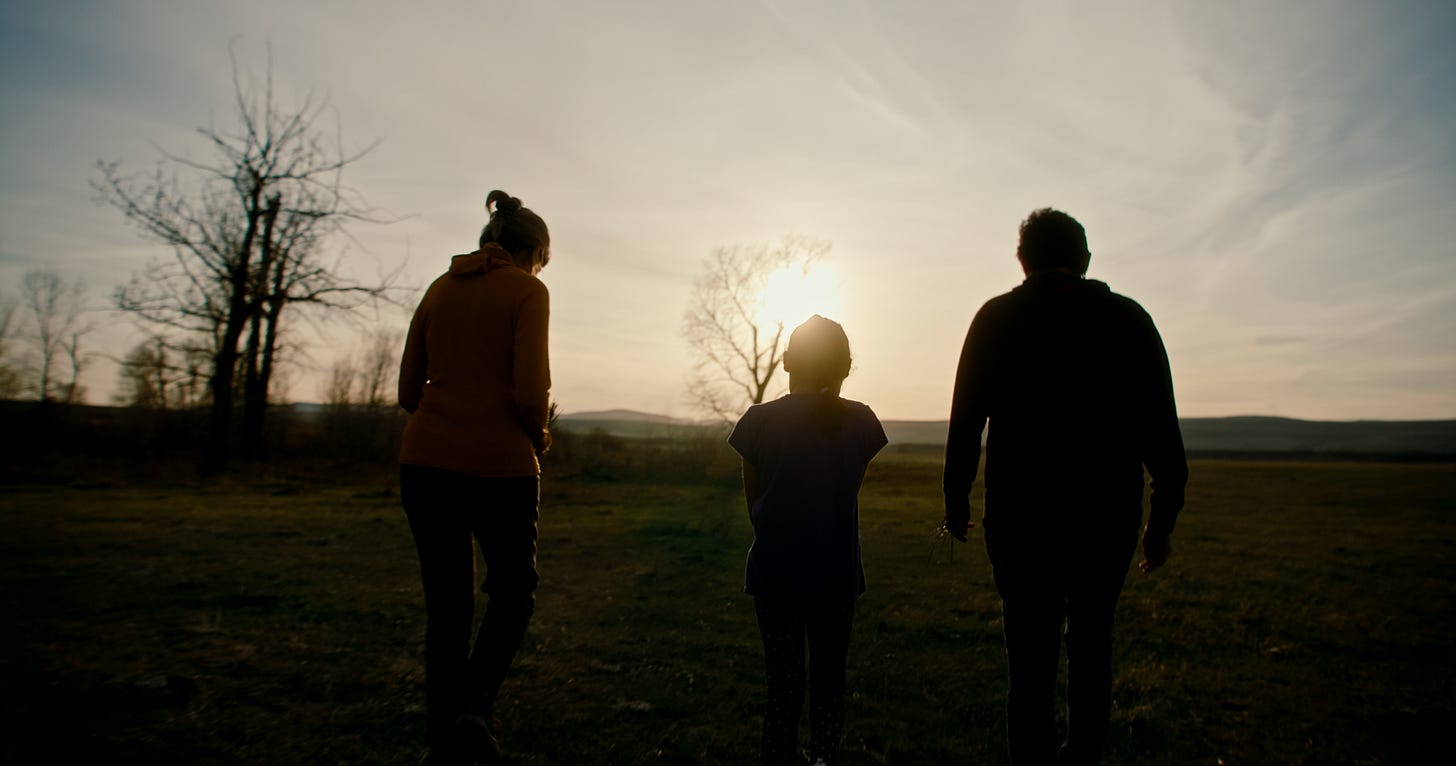Documentary Release: The restoration efforts healing Canada’s ecosystems
Three communities across Canada who have found creative ways to protect our biodiversity
We’re so excited to announce the release of the next episode in our Rework Your Future documentary series, featuring changemakers across Canada who are working to restore ecosystems and build climate resilience from the ground up. Every two weeks, we’ll release a new episode that will highlight the careers and projects that are shaping a just, sustainable future—ones that push us toward a world where humans and nature can thrive together.
This episode takes us to three different landscapes—an underwater forest, a national park, and the plains of southern Alberta. These places may seem far apart, but they are connected by a common thread: climate change and biodiversity loss are not distant threats for these communities; they are unfolding in the present. And the people who are working to restore these landscapes are not waiting for distant solutions or top-down policy shifts. They are rebuilding what has been lost, protecting what remains, and proving that true climate action is rooted in relationships—between people, species, and the ecosystems we call home.
Along the Pacific coast, the Kelp Rescue Initiative is working to restore one of the most vital and yet rapidly disappearing ecosystems in the ocean. Kelp forests act as nurseries for marine life, buffer shorelines from erosion, and pull carbon from the atmosphere. But rising ocean temperatures and unchecked pollution are wiping them out at a rapidly increasing rate.
The loss of kelp has cascading effects—when these underwater forests disappear, entire food chains collapse with them. A team of conservationists is testing new methods to regrow these forests and create the conditions for marine life to rebound. Their work is urgent, a race against warming waters that asks whether we can intervene quickly enough to save these ecosystems.
Further inland, in Jasper National Park, another rescue effort is underway. Caribou, once a thriving species across Canada, have seen their numbers plummet due to habitat destruction, human encroachment, and the disruptions of climate change. The Caribou Recovery Program is using cutting-edge conservation techniques to restore and protect these animals, from habitat restoration to carefully managed breeding programs.
These interventions are necessary because caribou herds do not recover on their own once their numbers fall too low. Without active efforts, they disappear completely. Their decline raises a deeper question: what happens when an ecosystem loses a keystone species? And can we undo the damage done to wild places, or at least create enough space for endangered species to survive?
And on the lands of the Piikani Nation, a restoration effort is unfolding that is as much about cultural survival as it is about ecological renewal. The Piikani Nation, part of the Blackfoot Confederacy, have long understood the deep interconnection between people, land, and water. But like so many Indigenous communities, they have seen their ecosystems pushed to the brink—by external interventions like dammed rivers, industrial agriculture, and the displacement of traditional food systems. These disruptions have not only harmed the land, but also the ability of the Piikani Nationto continue traditional stewardship practices that have sustained these ecosystems for generations.
Now, through a partnership with The Resilience Institute, the Piikani Nation is blending Indigenous knowledge with Western science to address climate change, restore native plant species, and secure food and water systems for the future. One of the most compelling aspects of their work is their focus on sweetgrass. This sacred plant, long used in ceremony, is also a key player in ecosystem health. But as wetlands disappear, sweetgrass is becoming harder to find. Now, the Piikani Nation is working with scientists to study whether it can also act as a carbon sink, storing carbon in the soil while providing critical habitat for other species.
This partnership challenges the idea that Indigenous knowledge and Western science exist in opposition. Instead, it recognizes that both are necessary to understand—and heal—the land. The most effective climate solutions are often the ones that have been in practice for thousands of years.
Biodiversity loss is often framed as a distant, abstract problem. But these three stories—the Kelp Rescue Initiative, the Caribou Recovery Program, and the Piikani Nation’s land restoration—show that it is happening now, in real places, in ways that disrupt lives and livelihoods. The question is not whether we will lose more species and ecosystems, but how much we are willing to fight for what remains.
Across the world, Indigenous communities make up just 5% of the population but steward 80% of the planet’s remaining biodiversity. Yet conservation efforts have historically ignored or displaced Indigenous people instead of supporting them. The Piikani Nation’s work is a clear example of how this approach is deeply flawed. The best way to protect ecosystems is not to separate people from the land but to support those who have been tending it for generations.
This episode of Rework Your Future is a glimpse into what that kind of future could look like. One where Indigenous knowledge is not sidelined, but central to the process. One where restoration is not just about preserving what’s left, but about rebuilding what has been lost. One where young people can see a different kind of path forward—one that doesn’t ask them to choose between a meaningful career and a liveable planet.
These stories remind us that the future is not yet written. The work of restoring biodiversity is already happening, in ways large and small, on the land and in the water, in remote wilderness and within communities. This is what the transition looks like—not just reducing harm, but actively healing.
WATCH THE FULL FILM HERE! New episodes drop every two weeks—make sure you’re subscribed so you don’t miss the next one.











